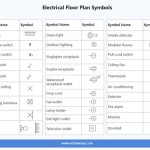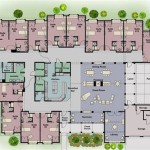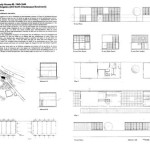Emergency Response Plan Example: A Comprehensive Guide
An Emergency Response Plan (ERP) is a critical document that outlines the procedures and protocols an organization will follow in the event of an emergency. It serves as a roadmap for ensuring the safety of personnel, minimizing damage to property, and facilitating a swift return to normal operations. A well-developed ERP is not just a bureaucratic formality; it is a vital tool for mitigating risk and protecting an organization’s most valuable assets.
The specific content of an ERP will vary depending on the nature of the organization, its location, and the types of hazards it faces. However, certain core elements are common to all effective ERPs. This article will present a comprehensive example, covering key aspects of an emergency response plan and highlighting important considerations for its development and implementation.
Before delving into a specific example, it’s important to understand the principles that underpin a successful ERP. These principles include a thorough risk assessment, clear lines of communication, well-defined roles and responsibilities, accessible resources, and regular training and drills. An ERP should be a living document, subject to periodic review and updates to reflect changes in the organization’s operations, environment, and regulatory requirements.
This example will assume a mid-sized manufacturing facility employing approximately 200 people. The facility is located in an area prone to severe weather events such as hurricanes and tornadoes, and also handles potentially hazardous materials in its manufacturing processes. The ERP will be designed to address a range of potential emergencies, including fires, chemical spills, medical emergencies, workplace violence, and natural disasters.
Key Point 1: Structure and Organization of the ERP
The first step in creating an ERP is to establish a clear and logical structure. This makes the document easy to navigate and ensures that essential information can be quickly located during an emergency. A typical ERP will include the following sections:
1. Executive Summary: This section provides a brief overview of the purpose and scope of the ERP. It should highlight key objectives and responsibilities.
2. Risk Assessment: This section identifies potential hazards and assesses their likelihood and potential impact. This assessment forms the basis for developing appropriate response procedures.
3. Activation Criteria: This section defines the triggers for activating the ERP. It specifies the conditions that must be met before emergency response procedures are initiated.
4. Emergency Response Team (ERT): This section identifies the individuals who will be responsible for coordinating and managing the emergency response. It outlines their roles, responsibilities, and contact information.
5. Communication Plan: This section describes how information will be disseminated during an emergency. It includes procedures for internal and external communication, as well as protocols for communicating with emergency responders and the media.
6. Emergency Procedures: This section details the specific steps that will be taken in response to different types of emergencies. It includes procedures for evacuation, shelter-in-place, first aid, and hazard control.
7. Resource Inventory: This section lists the resources that are available to support the emergency response. It includes information on the location of emergency supplies, equipment, and contact information for external support services.
8. Training and Drills: This section describes the training and drills that will be conducted to ensure that personnel are familiar with the ERP and capable of responding effectively to emergencies.
9. Plan Maintenance: This section outlines the procedures for reviewing, updating, and maintaining the ERP. It specifies the frequency of reviews and the process for incorporating changes.
10. Appendices: This section includes supporting documents such as floor plans, evacuation routes, contact lists, and material safety data sheets (MSDS).
For our manufacturing facility example, the risk assessment would identify potential hazards such as fires caused by faulty equipment or flammable materials, chemical spills resulting from equipment malfunctions or human error, medical emergencies due to workplace accidents, workplace violence incidents, and natural disasters such as hurricanes and tornadoes. The ERP would then outline specific procedures for addressing each of these hazards.
Key Point 2: Specific Emergency Response Procedures
The heart of the ERP lies in the specific emergency response procedures. These procedures provide step-by-step guidance for responding to different types of emergencies. The procedures should be clear, concise, and easy to follow, even under stressful conditions. Here are some examples of emergency response procedures that would be included in the ERP for our manufacturing facility:
Fire Emergency:
(a) Activate the fire alarm system.
(b) Evacuate the building using designated evacuation routes.
(c) Report to the designated assembly area.
(d) Account for all personnel.
(e) If trained and safe to do so, attempt to extinguish the fire using a fire extinguisher.
(f) Provide information to emergency responders upon their arrival.
Chemical Spill Emergency:
(a) Activate the chemical spill alarm.
(b) Isolate the spill area.
(c) Evacuate personnel from the immediate vicinity of the spill.
(d) Don appropriate personal protective equipment (PPE).
(e) Contain the spill using absorbent materials.
(f) Clean up the spill according to established procedures.
(g) Report the spill to the appropriate regulatory agencies.
Medical Emergency:
(a) Provide immediate first aid to the injured person.
(b) Call for emergency medical assistance (911).
(c) Provide information to the emergency medical responders upon their arrival.
(d) Document the incident.
Workplace Violence Emergency:
(a) Activate the emergency alert system.
(b) Evacuate the area if possible.
(c) If evacuation is not possible, shelter in place.
(d) Call for law enforcement assistance (911).
(e) Follow the instructions of law enforcement personnel.
Natural Disaster Emergency (Hurricane/Tornado):
(a) Monitor weather reports and warnings.
(b) Secure the facility by closing windows and doors.
(c) Move personnel to designated shelter areas.
(d) Account for all personnel.
(e) Remain in the shelter area until the all-clear is given.
(f) Assess the damage to the facility after the event.
These are just a few examples of the emergency response procedures that would be included in the ERP. Each procedure should be tailored to the specific hazards and risks faced by the organization.
Key Point 3: Communication and Training
Effective communication is essential during an emergency. The ERP should include a communication plan that specifies how information will be disseminated to personnel, emergency responders, and other stakeholders. The communication plan should include procedures for internal communication, such as using the public address system, email, or text messaging, as well as procedures for external communication, such as contacting emergency responders and the media. The plan should also designate a spokesperson who will be responsible for communicating with the media and the public.
Training is also critical for ensuring that personnel are familiar with the ERP and capable of responding effectively to emergencies. The ERP should include a training plan that specifies the types of training that will be provided, the frequency of training, and the personnel who will be required to participate. Training should include topics such as evacuation procedures, first aid, fire extinguisher use, and hazard communication. Regular drills should also be conducted to test the effectiveness of the ERP and to provide personnel with hands-on experience in responding to emergencies.
In our manufacturing facility example, the communication plan might include the use of a public address system to announce emergencies, email alerts to notify employees of updates, and a designated spokesperson to communicate with the media. Training would include annual fire extinguisher training, first aid and CPR certification for designated personnel, and regular evacuation drills. The facility would also conduct tabletop exercises to simulate different emergency scenarios and to identify areas for improvement in the ERP.
Regular review and updates are also essential to keep the ERP relevant and effective. The ERP should be reviewed at least annually, or more frequently if there are significant changes in the organization’s operations, environment, or regulatory requirements. The review should involve input from all stakeholders, including employees, management, and emergency responders. Any changes to the ERP should be documented and communicated to all personnel.
The development and implementation of an ERP is a complex process that requires careful planning and coordination. However, the benefits of having a well-developed ERP far outweigh the costs. By having a comprehensive ERP in place, organizations can significantly reduce the risk of injury, property damage, and business disruption in the event of an emergency. A robust ERP also demonstrates a commitment to safety and preparedness, which can enhance the organization’s reputation and improve employee morale.
The example provided is a basic framework. Tailoring the ERP to the specific risks and needs of an organization is crucial. Engaging with local emergency services, conducting thorough risk assessments, and regularly updating the plan are key to ensuring its effectiveness.
Ultimately, a well-crafted and regularly practiced Emergency Response Plan is an investment in the safety and security of an organization and its people.

Emergency Response Plan

Ohs Resource Portal Emergency Response Planning Template Package

An Example Of Emergency Response Plans Scientific Diagram

Emergency Response Plan Unl Water

Free Emergency Response Plan Template Safetyculture

Free Emergency Response Plan Template Safetyculture

Emergency Management Plan Template Luxury Action Diving Templates R Plans Response

Oa Guide To General Emergency Procedures

Create An Incident Response Plan Business Queensland

Emergency Response Planning Alberta Hotel Lodging Association








